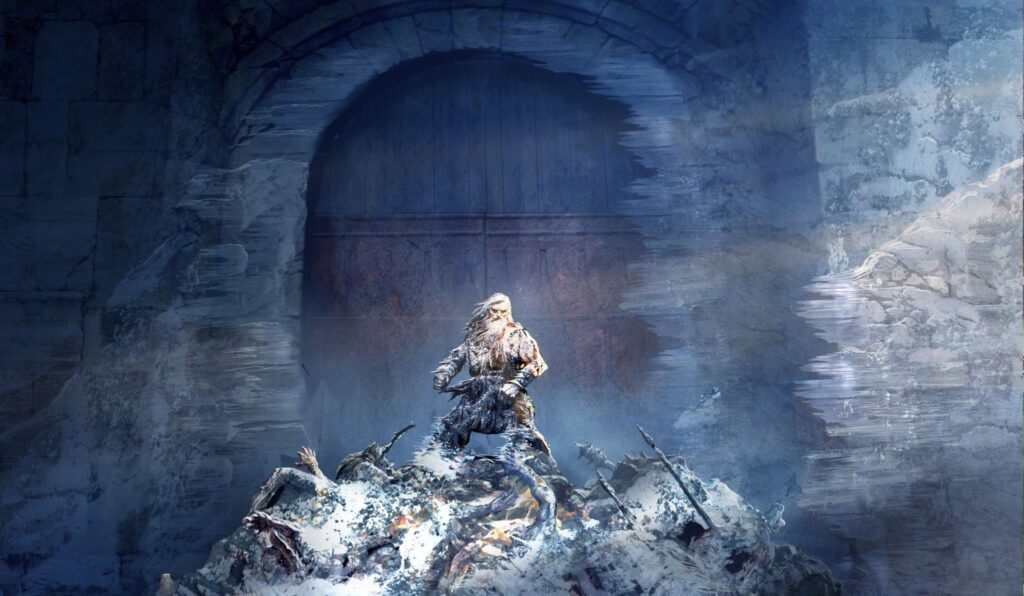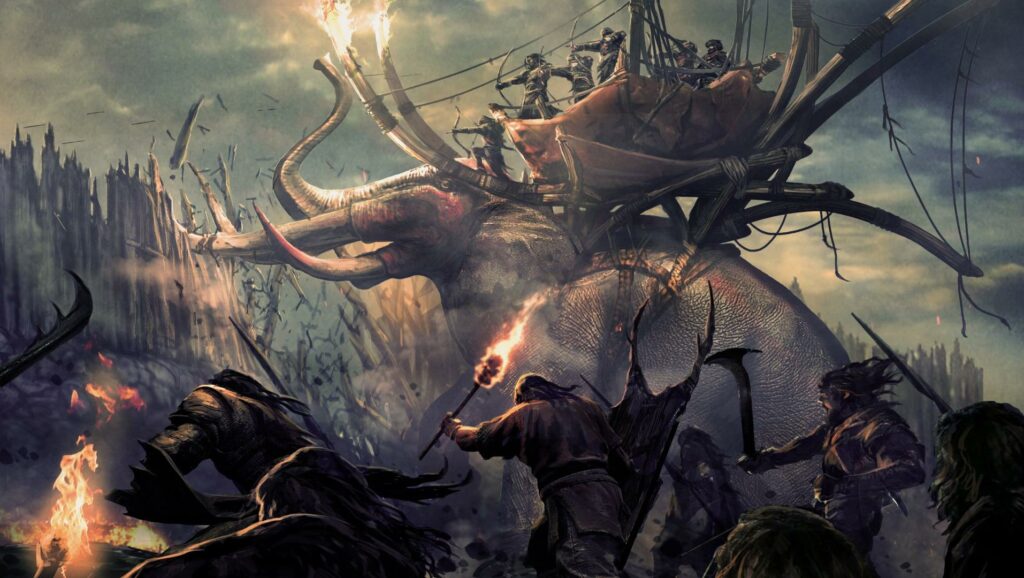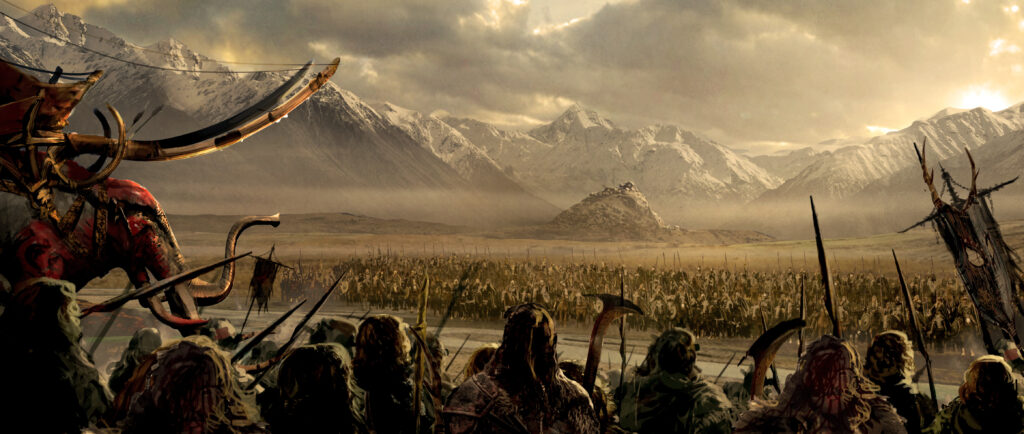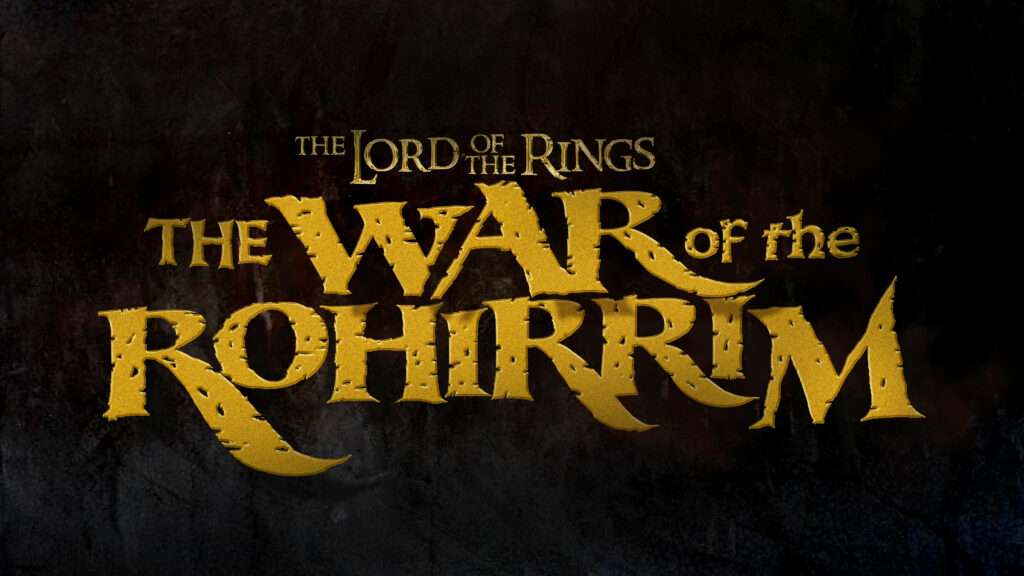Executive Producer Philippa Boyens is pretty pleased with the casting for The Lord of the Rings: The War of the Rohirrim.
“It’s exciting — we’ve been sitting on it for a little bit,” she says. “[But] it all seemed to come together in an organic way, which is what you want, I think. Suddenly, the right people come to the role.”
We’re speaking via a slightly crackly telephone hook-up just a couple days after the voice casting announcement that includes the news that renowned Scottish actor Brian Cox will be Helm Hammerhand, while Miranda Otto makes an unexpected return to Middle-earth as Éowyn in a narrative role.
An oral tradition
Boyens says that bringing in Otto as narrator was not an immediate decision. Rather it was one that gradually emerged.
She explains that Éowyn eventually felt like the natural way into the bloody and grim tale from Rohan’s past.
“Her voice was familiar,” she says. “And then I think it started to come easily for the writers.”
She hopes that it will also help locate the story for film fans who are unfamiliar with deeper cuts from Middle-earth’s history.
Yet that was not the only reason — an oral tradition felt fitting.
“It’s also so fragmentary, what we are dealing with in terms of the source material. It’s little bits of references here and there … so the oral tradition felt kind of right. The oral tradition of her telling the tale, passing the tale on.”
She doesn’t divulge to whom. But one guesses it is likely her grandson, Barahir. Tolkien not only names Barahir in The Lord of the Rings (solving any potential rights-access issues that would arise with her son, Elboron), he is also an in-world scholar and the author of The Tale of Aragorn and Arwen.

Helm Hammerhand: a complex and epic role
Boyens says that both the film’s director Kenji Kamiyama, and Warner Bros SVP and producer Jason DeMarco, were well aware of Brian Cox from his recent voice role in the English dub of Blade Runner: Black Lotus.
“They’re huge fans, of course,” she says.
“Weirdly, years ago — and this is me aging myself — I tried to go and see Brian’s performance as Titus Andronicus.”
She describes how this 1987 run of the Shakespeare tragedy directed by Deborah Warner has attained a legendary status.
“It was just one of those ones which was fresh and shocking,” she says.
“And it [the Andronicus role] wasn’t a role — this is from Brian himself — that many of the other actors were interested in taking on. But he connected to it. I couldn’t get a ticket, but I had a couple of friends saw it who were just blown away. And they talked about the way in which his rage was fuelled by this grief. And the underlying horror that was in the storytelling.
“And that kind of resonated with me when we were thinking about the Helm role. Because it just — it spans a lot of different emotions.”
She says the role — and the film — is about delving into Helm’s choices.
“And the mistakes he made as well. And then his acknowledgement of those mistakes. Was there an acknowledgement of those mistakes?” she asks.
At different points she notes Helm’s hot-temperedness, and how he almost certainly under-estimated the Rohirrim lord, Wulf, who after he is outlawed leads the Dunlending invasion of Rohan.
“[Yet], I saw the tales of him slipping out [of the Hornburg] during the siege and attacking the camp for his people as literally someone trying — even with their bare hands – to protect the people as the king should,” she adds.
“So he was a true manifestation of the king-protector.”
Helm’s heirs and the overthrow of Edoras
The grim reality, though, is that Helm is unable to protect his children.
His eldest son, Haleth, is slain when Edoras is overrun and taken by Wulf’s forces while Helm is forced to take refuge in the Hornburg. We touch only briefly on Helm’s other son but I conclude that his Hama’s fate will remain the same tragedy that it is in Appendix A.
Boyens describes the first as a shocking and powerful moment. Powerful, perhaps, for readers, to finally see things they’ve long envisaged through Tolkien’s descriptions; shocking for film fans to see the unexpected — Edoras besieged and overthrown.
On the other hand, Tolkien leaves the fate of Helm’s daughter unclear. In fact, he never names her even though Freca’s bid for her hand in marriage for his son, Wulf, is a key catalyst for war. Boyens concedes that we simply do not know a lot about her.
“Where we turn to, very deliberately, is to Æthelflæd, the Lady of the Mercians. Alfred the Great’s daughter,” Boyens says, and proceeds to provide a rapid-fire education on an era of British history that I’d barely known of until now.
“She never ruled as a queen per se; she’s known as the Lady of Mercians. But she seems to step in when her people needed her.
“Æthelflæd was also really ingenious, which comes into play in the script. [It] was an idea that Kamiyama had, and they (he and the writers) played with that. I can’t tell you too much about it. But it’s about how you save your life when you have very little to work with?”
It’s a statement that seems to suggest that Helm’s daughter – who they’ve chosen to name Héra – will play some key role after the fall of Edoras to Wulf, and the death of Haleth.
“And I really don’t think that Professor Tolkien would hate this,” Boyens says. “Because I always see him as a bit of a Mercian himself being from the Midlands.”
Héra: so named as a nod to the Anglo-Saxon
Unsurprisingly, the name Héra is chosen for alliterative effect: Helm, Haleth, Hama, Héra. Yet Boyens reveals that wasn’t initially the case.
“Someone suggested another name and I went: “Nope, it’s gotta start with “H”, sorry”,” she says.
“Actually, Fran Walsh named her. I told her we were stuck. It’s actually Héra (I get a quick pronunciation lesson and discover the é functions a little like the “ai” in hair) — that’s why it has the accent. Not so much based on the Greek [goddess] Hera, but a nod to the Anglo-Saxon.
“And I like to think she wasn’t a character that [the writers] tried to create wholesale — pulling things out of thin air. Héra is very much drawing from sources that fit with the storytelling that Tolkien himself is drawing on.”
In case you’re wondering, Boyens confirms that neither Fran Walsh nor Peter Jackson have an official production role. It’s more that, since they’re long-time collaborators and have so much experience within Tolkien’s Middle-earth, they’re sometimes just a natural sounding board for ideas.
“I also want to give a shout out to Gaia Wise who voices Héra. I think you guys are going fall in love with her. She is fantastic, she’s amazing. She just had such innate sense of who the character is and how to play her. She was great.
“She had a very natural sense of fiery-ness, but without it being petulance defiance.”

Mûmakil, mercenaries and money
While we’re discussing events at Edoras, conversation inevitably veers toward the Mûmakil that were prominent in the initial concept art released in January.
Boyens agrees with TORn’s suggestions about why Mûmakil might be present at the siege of Edoras.
“A lot of your supposition was right in that article from our viewpoint,” she says. She more or less adds only a single word to that: mercenaries.
“I think it works. I think it’s not against what you could infer from what we know.”
That might perplex some. But Tolkien Gateway seems to provide an element of support: the word “Variag” (as in the Variags of Khand) is a Slavic word derived from the Norse Varingar — “mercenary people”. Moreover, Tolkien’s notes to translators imagined the Corsairs as “similar to the Mediterranean corsairs: sea-robbers with fortified bases”. During the 16th Century, the Barbary Corsairs of the Mediterranean regularly used wealthy backers to finance their raids, in turn paying them a share of the plunder.
“In order to understand the use of those [ideas],” Boyens says, “you need to understand the character of Wulf and the position that Wulf is in — and had found himself in. And who he would be turning to.”
At this point she pulls in another fact, mentioning the great wealth of Wulf’s father, Freca.
“His father was not an insignificant Lord of Rohan. He had indeed grown fat and prospered,” she says, referencing Helm’s comment in Appendix A about Freca’s large waistline.
Boyens doesn’t expand any further, but my own guess is that The War of the Rohirrim will establish Wulf as the organising mind behind coordinated assaults on Gondor and Rohan, using resources wealth from his father to secure the assistance of Corsairs and Haradrim.
As Appendix A states:
Four years later (2758) great troubles came to Rohan, and no help could be sent from Gondor, for three fleets of the Corsairs attacked it and there was war on all its coasts. At the same time Rohan was again invaded from the East, and the Dunlendings seeing their chance came over the Isen and down from Isengard.
It was soon known that Wulf was their leader. They were in great force, for they were joined by enemies of Gondor that landed in the mouths of Lefnui and Isen.

A human struggle that becomes increasingly claustrophobic
If this sounds like a very human — and political — struggle, Boyens concurs. I suggest the absence of elves, dwarves and hobbits makes it a very different tale to The Lord of the Rings that most know.
She indicates that this was one of the reasons for choosing Helm’s story.
“It’s not about the Ring, it’s not about the Dark Lord. All of that is very peripheral to the story.”
She says it’s also the attraction of examining honour, revenge and familial ties — on both sides.
For Helm, there’s madness born of grief from the loss of the child. With Wulf, there’s his relationship with his father, and with Héra.
“He is his father’s son, but he has a different character. So he does actually offer [to wed] her and the writers asked: ‘Why?’ What was driving him? Was it just his father demanding that he do this? Was it his ambition? What was at play there?”
Even the historical grievances of the Dunlendings — that the lords of Gondor gave what the Dunlendings felt was their land to the Rohirrim — should come through in the film.
She says that all those things are in the Helm tale.
“When I talked to Kamiyama about it, it resonated with him. So that was the genesis,” she says.
“And there’s a moment in the film, which is incredibly gut-wrenching and powerful where Wulf commits himself to a course of action he cannot turn away from. And once he does that, the story darkens.”
She says it was here that the screenwriters Phoebe Gittins and Arty Papageorgiou really connected with Kamiyama.
“So, yes, it begins with these quite large-scale battles, but it actually becomes more intense and … claustrophobic,” Boyens says.
“And the nature of the film changes almost into a ghost story.
“As the siege takes hold, as the rumours of horror begin to spread. And I can give you a little tease and let you know that, although we said this isn’t about The Ring and this isn’t about the Dark Lord … there are the White Mountains and there are creatures [out there].”
Somewhat to my relief she squashes speculation that she might be referring to the Dead of Erech. Instead, she suggests that orcs inhabited the area — a historically more agreeable inclusion.
“Also, I can just add — and I thought it was, again, really interesting in the way that Kamiyama approached this — this was a long, cold winter that was hurting everyone.”
This suggests that there won’t be space to see Gondor’s own struggles. Gondor may come to the rescue in the end, but it seems the focus will be squarely on a life-and-death struggle within Rohan.
She won’t even confirm or deny the presence of Saruman the White in the film. We’ll just have to wait and see.

About the author: Staffer Demosthenes has been involved with TheOneRing.net since 2001, serving first as an Associate News Editor, then as Chief News Editor during the making of the Hobbit films. Now he focuses on features and analysis. The opinions in this article are his own and do not necessarily represent those of TheOneRing.net and other staff.


